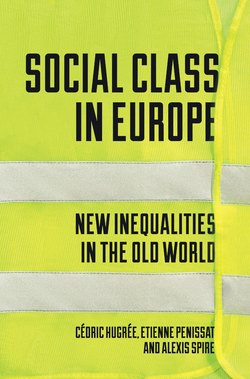Читать книгу Social Class in Europe - Étienne Penissat - Страница 13
На сайте Литреса книга снята с продажи.
TRANSCENDING THE CLICHÉS OF NATIONAL DIFFERENCE
ОглавлениеArguing for an empirical sociology of social class in Europe means taking the opposite view from that disseminated by the European Commission, which remains anchored to a division along national boundaries. The commission, via Eurostat (the statistical office of the European Union), supervises the publication of data provided by national statistical bodies (rate of growth, percentage of national debt, etc.), and publishes data on the operation of job markets (levels of employment and unemployment) that tend to underscore national differences. For example, per capita income varies widely from one country to another: the highest, that of Luxembourg, is three times that of the lowest, Romania.20 But the lens through which the European Commission views these matters is often highly restrictive and distorting. It effectively serves to compare countries with one another, in order either to validate the idea that inequalities can only be described at national level, or to set states in competition with one another. Official sources sometimes use other criteria, such as levels of education, but this is usually for the purpose of contrasting the ‘good student’ countries with the ‘poor students’ of Europe. Reference to social class, on the other hand, or even to socio-economic groups, is never used as a marker. Who knows how many farmers, skilled manual workers, senior managers or CEOs there are in Europe? While state development in France and the United Kingdom is based on statistical accounting in terms of social groups,21 this frame of reference is totally absent at European level. The unemployment rate is a good example of this bias, with significant political import: by emphasising differences in unemployment rates between countries, the statistics published by European institutions highlight disparities in economic performance while masking inequality of exposure to unemployment between the working class and the dominant class.
During the crisis in the eurozone in the late 2000s, arguments that were centred on national differences, sometimes embellished with culturalist stereotypes, became increasingly powerful: on the one hand there were the countries stigmatised by the term PIIGS (Portugal, Ireland, Italy, Greece and Spain) on the ground of their alleged inability to pay their national debt, suspected of being lazy, irresponsible and even corrupt; on the other were Germany and the countries of the North, depicted as disciplined, hard-working and honest. These generalisations, which echo Montesquieu’s old theory of climates, whereby the climate influenced the nature of human beings and their societies, have powerfully pervaded discourses and representations. In contrast to this thinking, our approach will seek to identify the European populations and social groups that have been most affected by the opening up of national economies to competition.
When European institutions do take an interest in inequalities between individuals, it is mainly from the point of view of ‘human capital’, defined as the set of qualifications, aptitudes, skills and experience accumulated by individuals over the course of their life. In a society where education has become universal, access to lifelong education is portrayed as the means of giving each person the ‘chance’ of social mobility or access to employment. This vision is manifested in the European Commission’s voluntarist policy of developing the ‘human capital’ of European citizens. The European Union has set itself the goal of improving levels of education by 2020, with the aim of increasing individuals’ employability. The two principal objectives that have been put into figures are increasing the proportion of people who have been awarded a higher education qualification, and reducing the proportion of young people who leave education and training early, an area where there are wide variations between countries. However, universal access to education does not automatically translate into a reduction in social inequality, since working-class children always have great difficulty in converting their qualifications into social positions as advantageous as those of children of the middle and dominant classes.22 Moreover, this institutional approach tends to reduce inequality to a matter of education alone, while inequalities constructed in the workplace, and in housing, leisure and sociality, remain hidden.
